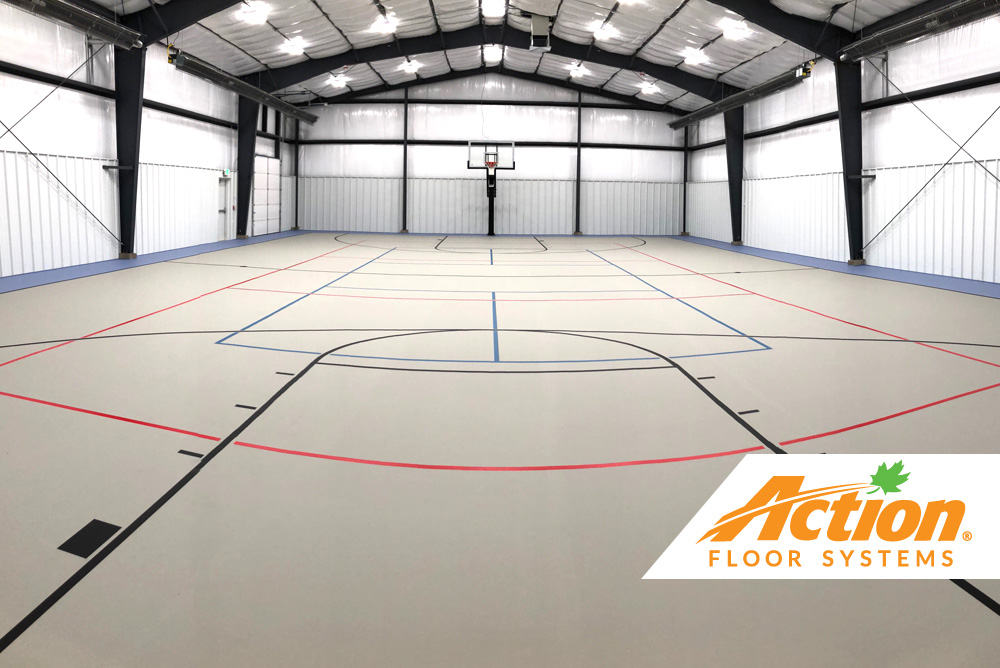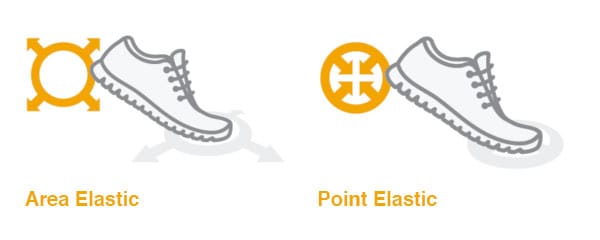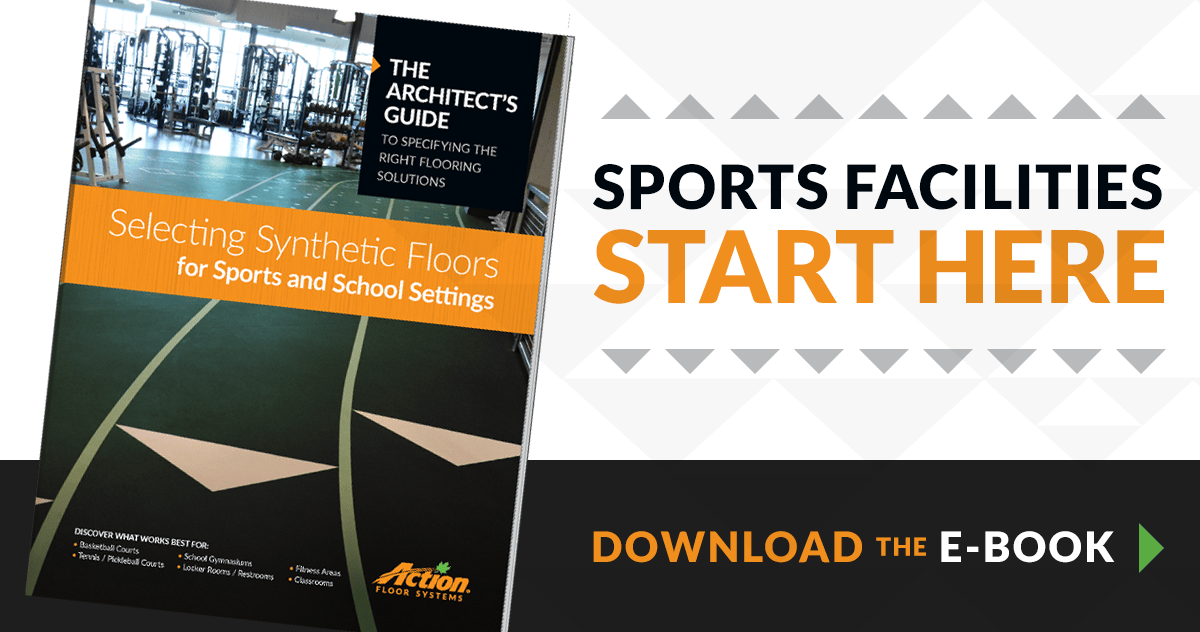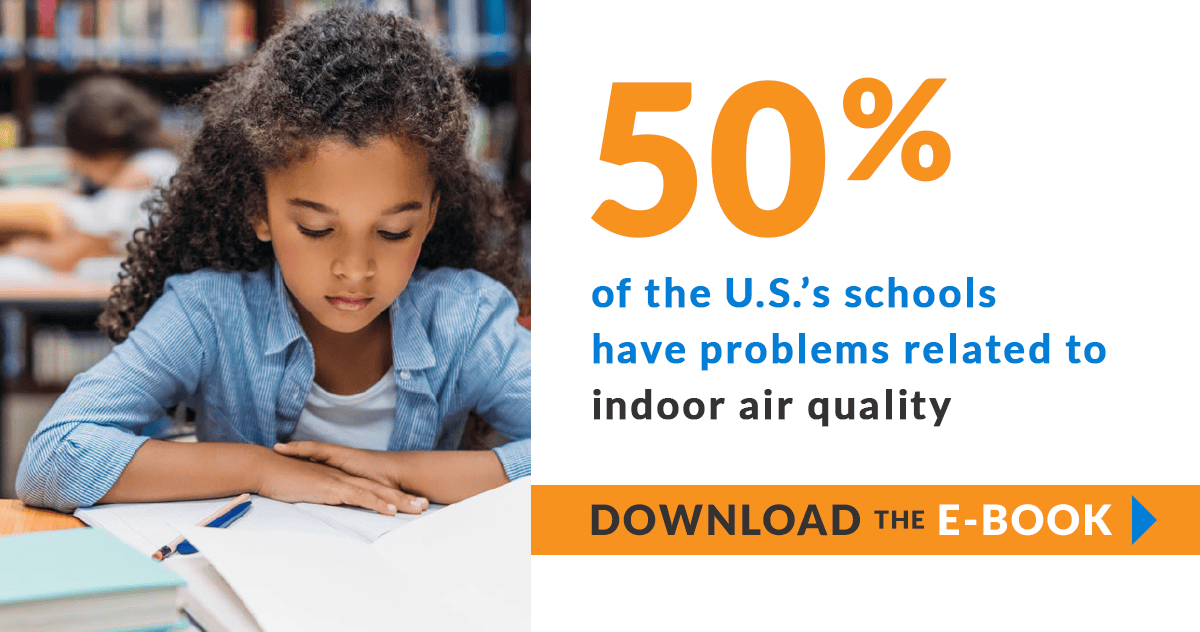
There’s an ideal sports surface for every application and situation. While a sports floor system featuring hardwood maple is an excellent choice for many competitive gyms and basketball courts, there are times when facility owners need other options.
That’s where synthetic pad and pour sports floor systems, also known as polyurethane sports floors, can meet your needs. These flooring products offer durability, longevity, color customization, and ease of maintenance. But, do they deliver the same performance features of hardwood sports floors?
Let’s take a closer look at some common questions and what you can expect from a reliable synthetic sports floor.
Are Synthetic Sports Floors Area Elastic or Point Elastic?
We defined the difference between point and area elastic flooring in a previous installment of our Sports Floor 101 series.
Put simply, area elastic sports floor systems are tested for area deflection, which measures how the floor transmits vibrations caused by athlete movements and ball bounce. Point elastic sports floors keep the energy localized, so vibrations don’t spread across the floor.

In general, hardwood sports floors are area elastic and synthetic floors are point elastic. That is because polyurethane sports flooring is applied on top of the concrete slab without a subfloor system underneath.
There are, however, synthetic floor systems that include a subfloor. These are known as mixed elastic sports floor systems. They include Action Herculan ME and the Action Herculan Ultimate Combination, the latter of which combines hardwood maple and a pad and pour product with a shared subfloor. Mixed elastic sports floor systems give you the resilience of area elastic as well as the uniformity and versatility of a point elastic synthetic floor.
Synthetic Sports Floors and Shock Absorption
Although the subflooring underneath resilient hardwood maple courts helps provide superior shock absorption (or force reduction), synthetic sports floors also offer shock absorption features. That’s where the “pad” in pad and pour floors comes in.
The amount of shock absorption in a synthetic floor will primarily depend on the thickness of the rubber pad and the layer of polyurethane topcoat poured over the surface.
The Maple Floor Manufacturers Association (MFMA) calls for hardwood sports floors to have shock absorption of 50 percent. For comparison, Action Herculan synthetic sports floors still provide shock absorption from 13 to 36 percent, depending on the system.
While hardwood courts offer more force reduction for intense activities and competitive play, a good pad and pour sports floor system has adequate shock absorption for many uses.
Both hardwood and synthetic systems are evaluated under standards outlined in ASTM F2772, which requires a minimum force reduction of 10 percent to meet the standards. All Action Floors products exceed the minimum requirements for sports floors.
Synthetic Sports Floors and Ball Rebound
Ball rebound or ball bounce measures how a basketball responds on a sports surface. If test results show ball rebound of 100 percent, that means the floor provides the same response you’d get bouncing the ball on concrete.
Pad and pour sports floors from Action Floor Systems deliver ball rebound of 99 percent. That means basketballs will respond almost the same way as they do on concrete. You can compare that to the minimum ASTM F2772 requirement for ball bounce of 90 percent.
A related benefit of synthetic sports floors is uniformity. Players can expect the same level of ball rebound throughout a synthetic court and they will not encounter spots where the ball bounce isn’t as uniform.
The Durability of Synthetic Sports Floors
Synthetic sports floors are often used in multi-purpose gymnasiums, or areas that see a lot of traffic and a variety of activities. Pad and pour sports floor systems are an excellent option if your gym doubles as a school cafeteria or you often move bleachers and tables across the surface. That’s thanks to the versatility of synthetic options such as the Action Herculan line of sports flooring.
If you read through synthetic sports floor specifications in our Architect Resources, you’ll find several measurements relating to durability. Two of the most important are tear strength and elongation at break. Elongation at break measures a floor’s ability to avoid punctures from things such as table legs, while tear resistance measures the ability for the surface to withstand objects moving across it.
For example, if you require spike resistant flooring in an area where athletes will be wearing cleats Action Floors’ Action Herculan SR has high elongation at break test results and is ideal for indoor applications where spikes or cleats maybe used.
Action Floors’ synthetic sports floor systems are evaluated for durability factors under EN ISO 527-1 and DIN standards. It is important to invest in floors that have been tested and meet recognized performance standards, because not all synthetic floors offer the same durability, even if they look nice when they’re first installed.
“Any freshly painted sports floor will look beautiful,” says Action Floors Midwest Regional Representative Gary Zander. “But, use a cheaper system and after a few years, you start seeing rips and punctures in it.”
The ease of maintenance is another benefit of synthetic sports flooring. Because the Action Herculan pad and pour systems are seamless and non-porous, they are easy to keep clean and can be resurfaced when necessary.
Do Synthetic Sports Floors Make Sense in Your Facility?
Pad and pour synthetic sports floors can be used in many areas beyond a gymnasium. From wrestling and cheerleading rooms to auxiliary gyms, indoor tracks, and tennis courts, this is a versatile product with many benefits.
The experts at Action Floors are able to help you identify the right sports flooring options for your school or athletic facility. If you’re interested in learning more about the possibilities of synthetic sport floors, download our free e-book, Specifying Synthetic Floors for Sports and School Settings. If you have immediate needs or specific questions, get in touch with an Action Floors representative for your region. Contact us today.




















